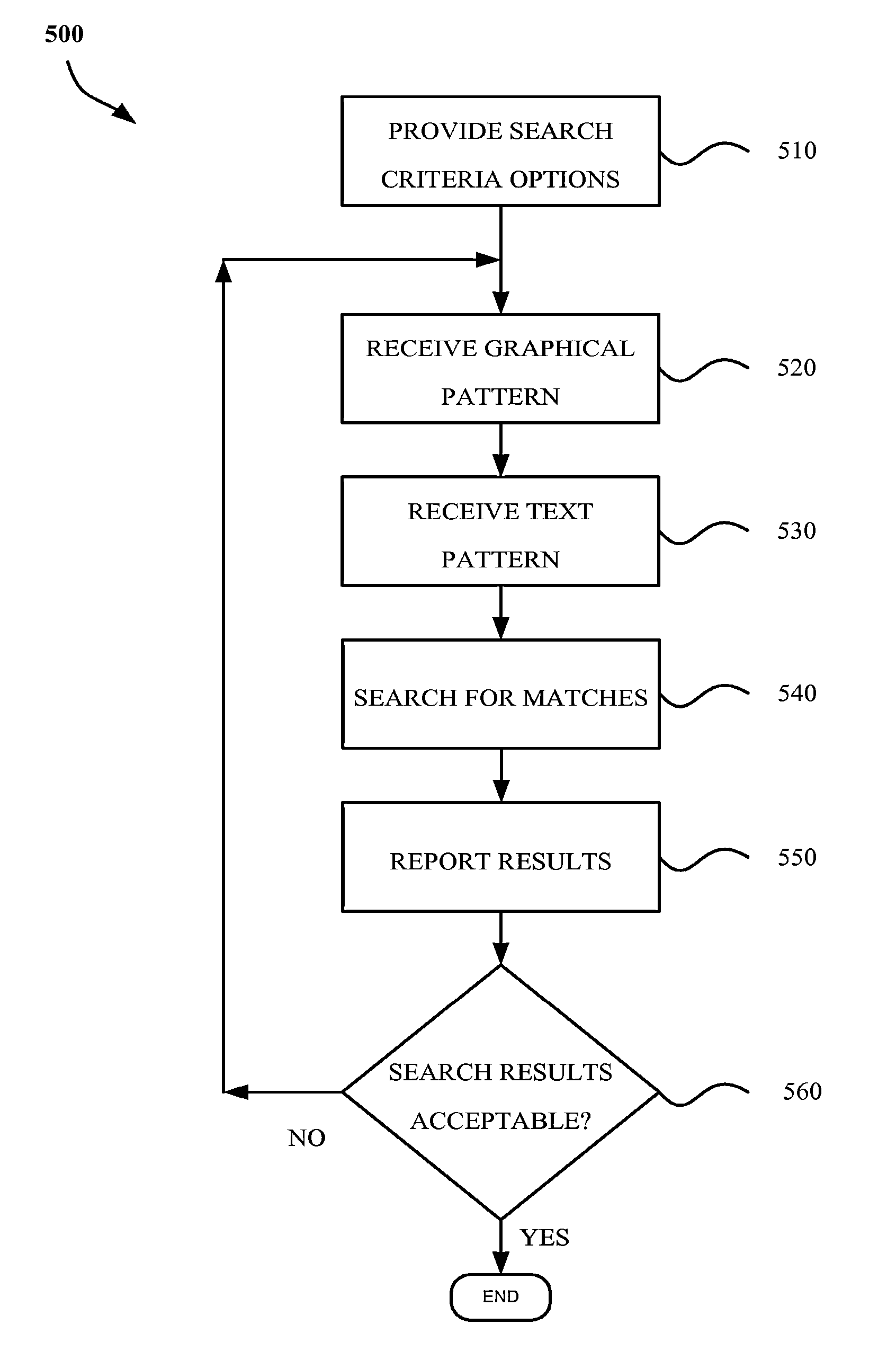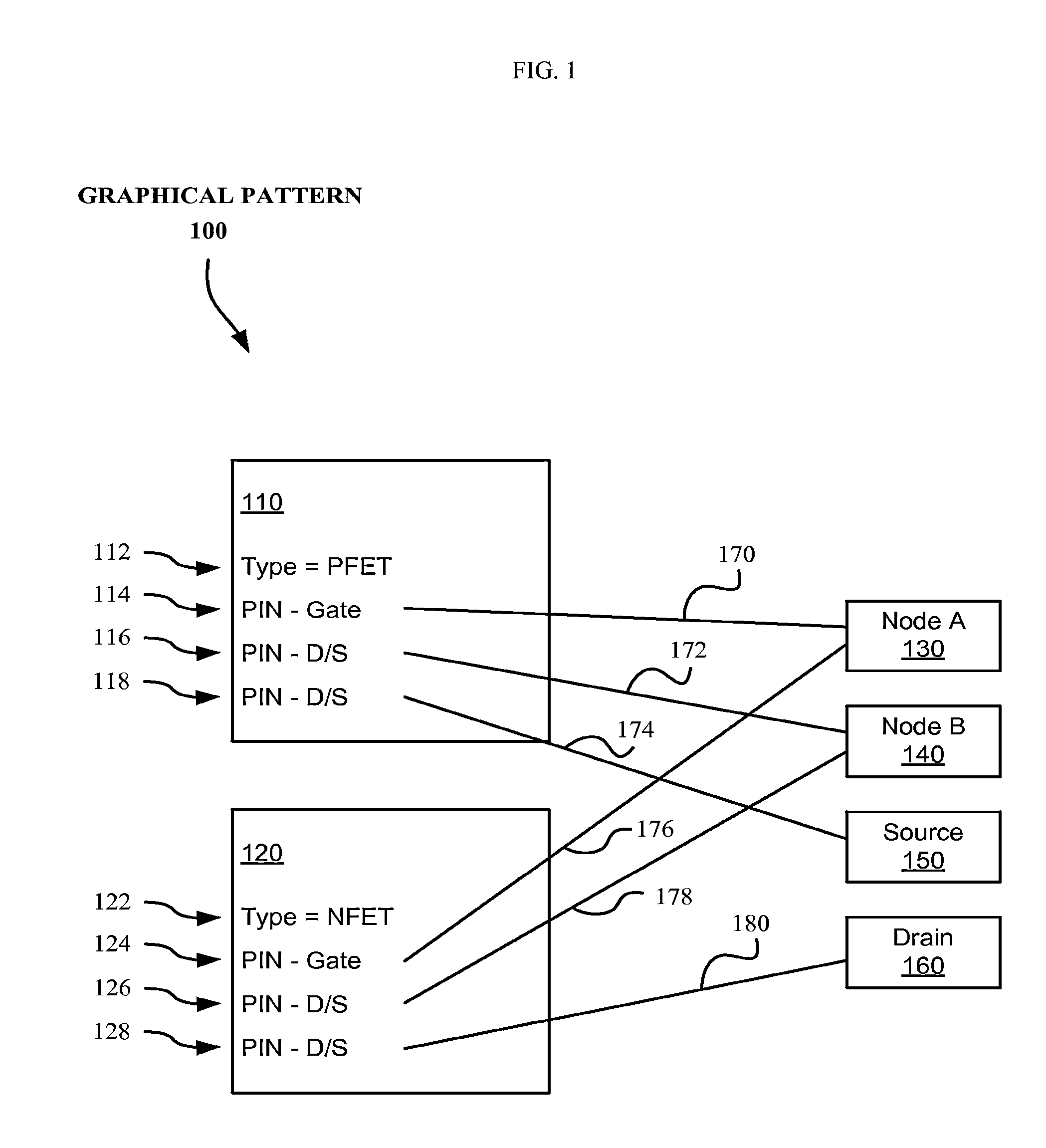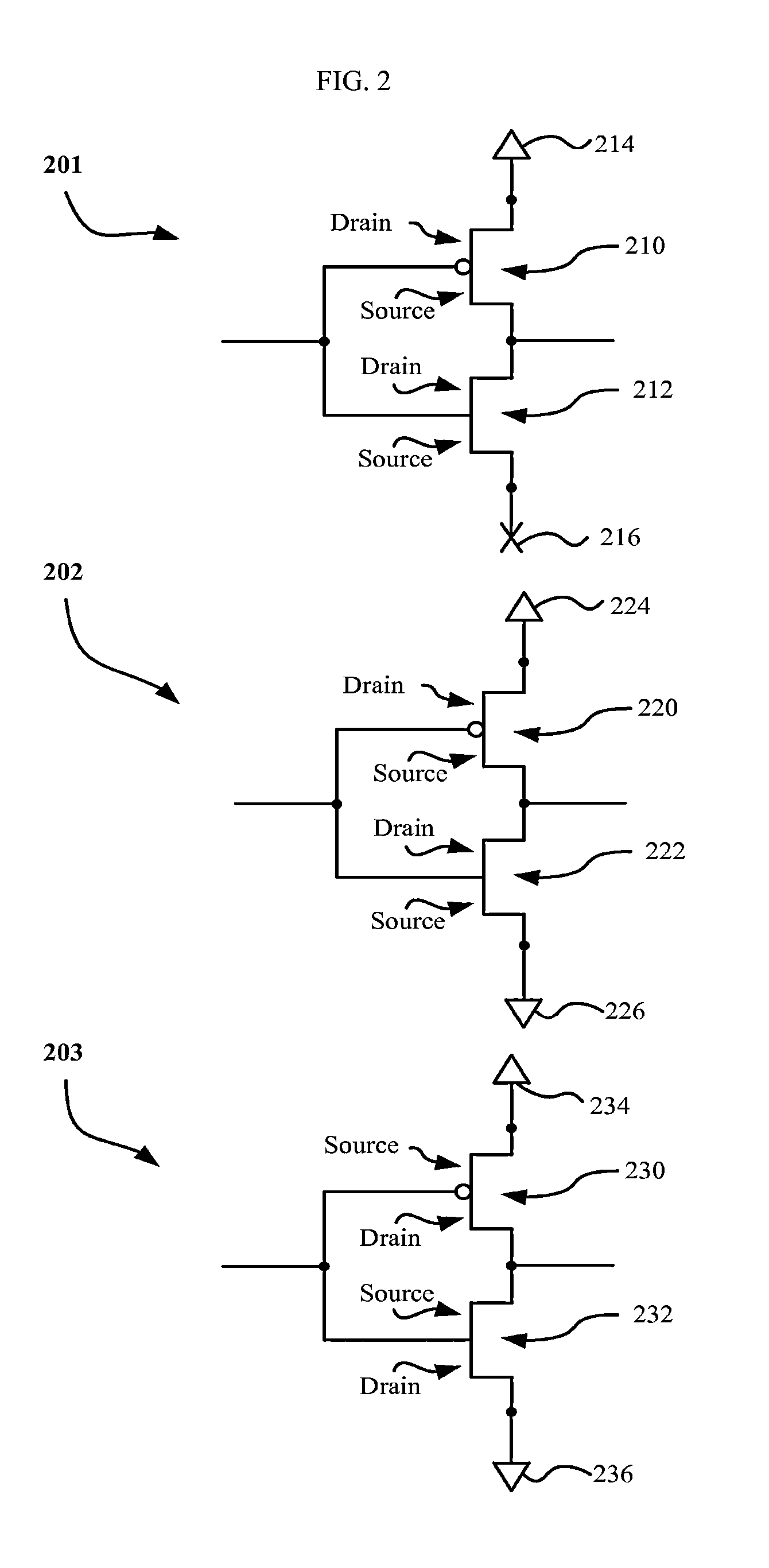System and method of detecting design rule noncompliant subgraphs in circuit netlists
a technology of circuit net and subgraph, applied in the field of automatic methods for analyzing the design of electrical circuits, can solve the problems of difficult mathematical modeling, less standardized, and less well established areas, and achieve the effect of enhancing flexibility
- Summary
- Abstract
- Description
- Claims
- Application Information
AI Technical Summary
Benefits of technology
Problems solved by technology
Method used
Image
Examples
examples
[0089]In one embodiment, the user can fill out the first candidate identifier portion of the design rule template by entering in, in a visual environment, a subgraph template image showing one or circuit portions of the larger integrated circuit that are of interest to the user, optionally supplemented by additional data (e.g. text patterns) as needed. This portion of the template can be used to search the netlist for target subgraphs (step 1), and the accuracy of this portion of the template can be verified or pre-checked by the user as previously discussed (step 1A).
[0090]Again for purposes of this discussion, a target subgraph (subgraph) of very specific patterns and / or physical attributes (e.g. various electronic devices and electrical connections between these devices) that may be found within a greater circuit, and that are relevant for purposes of the design rule at hand.
[0091]As previously discussed, the invention's mixed graphical and text based approach to defining subgrap...
PUM
 Login to View More
Login to View More Abstract
Description
Claims
Application Information
 Login to View More
Login to View More - R&D
- Intellectual Property
- Life Sciences
- Materials
- Tech Scout
- Unparalleled Data Quality
- Higher Quality Content
- 60% Fewer Hallucinations
Browse by: Latest US Patents, China's latest patents, Technical Efficacy Thesaurus, Application Domain, Technology Topic, Popular Technical Reports.
© 2025 PatSnap. All rights reserved.Legal|Privacy policy|Modern Slavery Act Transparency Statement|Sitemap|About US| Contact US: help@patsnap.com



